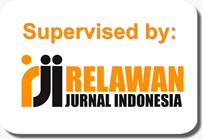THE IMPACT OF GREEN MARKETING AND LIFESTYLE ON PURCHASE INTENTION IN UNIQLO INDONESIA WITH CONSUMER BEHAVIOR AS INTERVENING VARIABLE
Abstract
With the fast fashion industry experiencing rapid growth in Indonesia, the effectiveness of green marketing strategies employed by major players such as UNIQLO Indonesia has become a critical concern. This study aims to investigate the impact of green marketing and lifestyle on purchase intention within the context of UNIQLO Indonesia's fast fashion industry, with a focus on understanding consumer behavior as an intervening variable. To achieve this, the study utilizes a mixed-methods approach, incorporating surveys and interviews to gather data. The data analysis employs statistical and analytical techniques to examine the relationships between variables, while also utilizing an Industrial Organizational (I/O) model to formulate effective strategies. By employing these methods, the study seeks to provide a comprehensive understanding of the interplay between green marketing, lifestyle, consumer behavior, and purchase intention in the specific context of UNIQLO Indonesia. The expected results of this study include valuable insights into the alignment between UNIQLO Indonesia's green marketing strategies and consumer behaviors. It is anticipated that the findings will offer actionable recommendations to strengthen the brand's sustainability efforts and enhance its market competitiveness. By understanding the mediating role of consumer behavior and developing targeted marketing campaigns, UNIQLO Indonesia can enhance the effectiveness of its green marketing initiatives, ultimately contributing to a more sustainable and competitive position within the Indonesian fast fashion industry.
Keywords: Green Marketing, Lifestyle, Consumer Behavior, Purchase Intention, Strategies
Full Text:
PDFReferences
Farhan, M. R., & Adlina, H. (2022). The Influence Of Store Atmosphere And Viral Marketing On Buying Decision:(Study on Seis Café & Public Space Consumers on Sei Silau Street, Medan City). Journal of Humanities, Social Sciences and Business (JHSSB), 2(1), 241–254.
Fearnley, M. R., & Amora, J. T. (2020). Learning Management System Adoption in Higher Education Using the Extended Technology Acceptance Model. IAFOR Journal of Education, 8(2), 89–106.
Ha, N. T., Nguyen, T. L. H., Pham, T. Van, & Nguyen, T. H. T. (2021). Factors influencing online shopping intention: An empirical study in Vietnam. The Journal of Asian Finance, Economics and Business, 8(3), 1257–1266.
Hair, J. F., Risher, J. J., Sarstedt, M., & Ringle, C. M. (2019). When to use and how to report the results of PLS-SEM. European Business Review, 26(2), 106–121. https://doi.org/10.1108/EBR-10-2013-0128
Henseler, J., & Fassott, G. (2010). Testing moderating effects in PLS path models: An illustration of available procedures. Handbook of Partial Least Squares: Concepts, Methods and Applications, 713–735.
Henseler, J., Ringle, C. M., & Sinkovics, R. R. (2009). The use of partial least squares path modeling in international marketing. In New challenges to international marketing. Emerald Group Publishing Limited.
Herrmann, S. (2017). A new textiles economy: Redesigning fashion’s future. Circular Fibres Initiative.
Hulin, C. (2001). Can a reliability coefficient be too high? J Consum Psychol, 10(1–2), 55.
Khatri, P., Sahoo, K., Bergman, R., & Puettmann, M. (2021). Life Cycle Assessment of North American Laminated Strand Lumber (LSL) Production. Recent Progress in Materials, 3(4), 1–25.
Kotler, P, & Keller, K. . (2008). Manajemen pemasaran. Jakarta: PT Prenhallindo.
Kotler, Philip. (2008). Manajemen Pemasaran Edisi 12 Jilid 2. Indeks.
Kotler, Philip, & Keller, K. L. (2009). Manajemen pemasaran. edisi.
Kotler, Philip, & Keller, K. L. (2012). Manajemen Pemasaran (13th ed.). Erlangga.
Manongko, A. A. C., & Kambey, J. (2018). The influence of green marketing on decision purchasing organic products with interests of buying as an intervening variable at Manado City, Indonesia.
Nagaraju, B., & Thejaswini, H. D. (2014). Consumers’ perception analysis-market awareness towards eco-friendly FMCG products: A case study of Mysore district. IOSR Journal of Business and Management, 16(4), 64–71.
Nurcahyadi, G. (2021). Kesadaran Konsumen Terhadap Produk Ramah Lingkungan Terus Meningkat. Mediaindonesia.Com Developer. https://mediaindonesia.com/ekonomi/421640/kesadaran-konsumen-terhadap-produk-ramah-lingkungan-terus-meningkat
Paul, P. J., & Olson, J. C. (2013). Perilaku konsumen dan strategi pemasaran. Jakarta: Salemba Empat.
Peattie, S., & Peattie, E. (2001). Consumer perceptions of eco-labels: An empirical study. Journal of Marketing Management, 17(9–10), 971–989.
Statista. (2023). Apparel - Indonesia.
Suryani, T. (2008). Perilaku konsumen: implikasi pada strategi pemasaran. Yogyakarta: Graha Ilmu, 118.
DOI: https://doi.org/10.31846/jae.v12i2.787
Refbacks
- There are currently no refbacks.

This work is licensed under a Creative Commons Attribution-NonCommercial-NoDerivatives 4.0 International License.
e-Jurnal Apresiasi Ekonnomi Indexed by:












